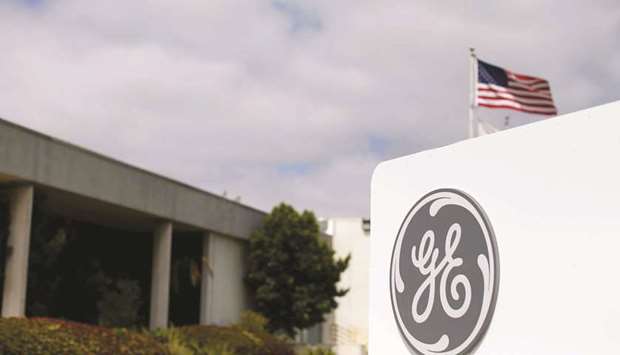General Electric Co chief executive officer John Flannery is taking the biggest step yet in his plan to revitalise the beleaguered manufacturer, agreeing to merge its century-old locomotive business with Wabtec Corp in a deal valued at $11.1bn.
GE and its shareholders will own 50.1% of the combined company, giving the parent an ongoing stake in the recovery after its rail unit struggled with a lengthy slump in the North American freight market.
Under the terms of the tax-free transaction, GE will receive an upfront cash payment of $2.9bn, the companies said yesterday in a statement.
The deal furthers Flannery’s efforts to streamline operations and reduce the complexity that he blames for deepening the company’s problems. Faced with one of the worst slumps in GE’s 126-year history, the CEO has pledged to cut costs and refocus the Boston-based manufacturer on key markets, such as aviation and energy.
The combination will transform rail-equipment maker Wabtec, which will roughly double its annual revenue by adding one of the world’s largest manufacturers of freight locomotives. The Wilmerding, Pennsylvania-based company said it was attracted to the complementary products and a growing order book after several lean years for the industry.
The deal will “improve our ability to address the cyclicality” associated with the freight industry, Wabtec CEO Raymond Betler said on a conference call. He will remain in the same role after the deal closes.
GE advanced 2.4% to $15.33 ahead of regular trading in New York. The stock declined 14% this year through Friday, while the S&P 500 Index increased 1.5%. Wabtec rose less than 1% in premarket trading to $96. GE Transportation, which had about 8,000 employees at the beginning of the year, has faced falling sales after a decline in North American rail-shipping volume left an oversupply of trains. GE said in July that it would cut hundreds of jobs while ending most locomotive manufacturing in Erie, Pennsylvania, and shifting some work to a non-union factory in Fort Worth, Texas.
Despite the industry’s challenges, GE Transportation routinely ranks among GE’s most-profitable units. It generated operating income of $824mn last year, with a profit margin of almost 20%.
Railroads are now poised to order more equipment to keep up with rising shipments of commodities such as grain and the sand used in hydraulic fracturing for oil and natural gas. Over the past two quarters, GE Transportation has received $3.6bn in new orders, the company said. Wabtec also expects to grow this year.
“North American freight market dynamics bode well for” Wabtec, Matt Elkott, a Cowen & Co analyst, said in a note Sunday before the deal was announced.
A tie-up with GE Transportation could generate operational synergies in excess of 20%, he said.
Under the terms of the deal, GE will sell a portion of GE Transportation to Wabtec and execute a spinoff of other assets, which will then be merged with Wabtec. The transaction, expected to close early next year, is valued at $10bn after adjusting for the “net tax step-up value of $1.1bn,” according to the statement.
Wabtec, which builds locomotives and offers services and other products to the freight-rail and passenger-transit markets, generated $3.9bn in sales last year. The company will keep its headquarters and Chairman Albert Neupaver was reappointed executive chairman. Rafael Santana, currently CEO of GE Transportation, will run Wabtec’s freight segment, according to the statement.
Wabtec traces its roots to 1869, when it was known as Westinghouse Air Brake. It became independent in 1990 through a management buyout.

The logo of General Electric is shown at its subsidiary company GE Aviation in Santa Ana, California (file). GE chief executive officer John Flannery is taking the biggest step yet in his plan to revitalise the beleaguered manufacturer, agreeing to merge its century-old locomotive business with Wabtec Corp in a deal valued at $11.1bn.
